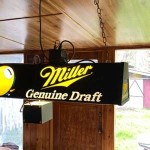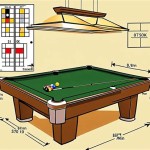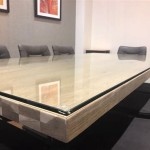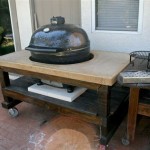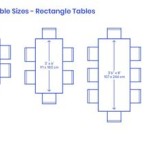How to Build a Coffee Table Out of Pallets: A Step-by-Step Guide
Repurposing pallets into furniture provides a cost-effective and environmentally conscious approach to home décor. A coffee table constructed from pallets offers a rustic and unique aesthetic, adaptable to various interior design styles. This article provides a comprehensive guide on building a coffee table from pallets, covering material selection, preparation, construction, and finishing.
Key Point 1: Sourcing and Preparing the Pallets
The initial and crucial step to building a pallet coffee table involves sourcing suitable pallets and preparing them for construction. Not all pallets are appropriate for furniture making; therefore, careful selection and thorough preparation are essential for safety and aesthetics.
Sourcing Pallets: Pallets can be acquired from various sources, including local businesses, construction sites, and online marketplaces. When sourcing, prioritize pallets labeled with an IPPC (International Plant Protection Convention) stamp. This stamp indicates that the pallet has been treated to prevent insect infestation and disease transmission.
Avoid pallets marked with "MB," which signifies methyl bromide fumigation. Methyl bromide is a highly toxic insecticide and should be avoided due to potential health risks. Pallets marked with "HT" (heat treated) are a safer alternative, as this method uses heat to eliminate pests.
Furthermore, assess the structural integrity of the pallets. Look for pallets with minimal damage, such as broken slats, significant cracks, or signs of rot. Opt for pallets made from hardwood, such as oak or maple, for greater durability and aesthetic appeal.
Cleaning and Disassembly: Once suitable pallets are acquired, the next step is to clean and disassemble them. Begin by thoroughly cleaning the pallets with a stiff brush and a mixture of water and mild detergent. Remove any dirt, debris, or loose particles. For stubborn stains or mildew, consider using a pressure washer, ensuring to allow the pallets to dry completely before proceeding.
After cleaning, carefully disassemble the pallet. Use a pry bar, oscillating multi-tool with a saw blade attachment, or a specialized pallet buster to separate the individual slats and support blocks. Exercise caution during disassembly to avoid damaging the wood. Pallet wood can be brittle and prone to splitting.
Sanding and Smoothing: With the pallet disassembled, each individual piece of wood requires sanding and smoothing. Begin with a coarse-grit sandpaper (e.g., 80-grit) to remove any rough edges, splinters, or imperfections. Progress to medium-grit sandpaper (e.g., 120-grit) to further smooth the surface. Finally, use fine-grit sandpaper (e.g., 220-grit) for a polished finish.
Electric sanders, such as orbital sanders or belt sanders, significantly reduce the time and effort required for sanding. Ensure to wear a dust mask and eye protection during the sanding process to prevent inhalation of wood dust and eye irritation.
Key Point 2: Assembling the Coffee Table Structure
After preparing the pallet wood, the next phase involves assembling the coffee table structure. This step requires careful planning and precise execution to ensure a sturdy and aesthetically pleasing final product.
Design Considerations: Before assembling, determine the desired dimensions and design of the coffee table. Consider the size of the living room, the height of the surrounding furniture, and the intended function of the table. Sketching a rough design allows for visualizing the final product and identifying potential challenges.
Common coffee table designs include a simple rectangular table with a single pallet as the top surface, or a more elaborate design using multiple pallet slats to create a custom-sized tabletop. Consider adding a lower shelf for storage or decorative purposes.
Frame Construction: The frame provides structural support for the tabletop and legs. Construct the frame using the disassembled pallet wood, ensuring that the pieces are cut to the desired length and width. Use wood glue and screws to securely join the frame members together. Clamps can be used to hold the pieces in place while the glue dries.
Ensure that the frame is square and level. Use a carpenter's square to verify the accuracy of the angles. Any inaccuracies in the frame will translate into a warped or unstable coffee table.
Tabletop Assembly: The tabletop can be constructed using individual pallet slats arranged side-by-side. Attach the slats to the frame using wood glue and screws. Ensure that the slats are evenly spaced and aligned. Consider leaving small gaps between the slats for a rustic aesthetic, or fill the gaps with wood filler for a smooth, seamless surface.
Alternatively, a solid tabletop can be created by gluing and clamping the slats together. This method requires careful alignment and even pressure to ensure a flat and even surface. Allow the glue to dry completely before removing the clamps.
Leg Attachment: The legs provide support and elevate the coffee table. Options for legs include repurposed pallet wood, metal legs, or pre-fabricated wooden legs. Attach the legs to the frame using screws and wood glue. Ensure that the legs are securely attached and evenly spaced to distribute the weight of the tabletop.
Consider using metal brackets to reinforce the leg attachments. This will add extra stability and prevent the legs from wobbling or breaking under weight.
Key Point 3: Finishing and Protecting the Pallet Coffee Table
The final stage involves finishing and protecting the pallet coffee table. This step enhances the aesthetic appeal of the table and protects the wood from moisture, scratches, and stains.
Filling Imperfections: Before applying a finish, fill any holes, cracks, or imperfections in the wood with wood filler. Apply the wood filler evenly and allow it to dry completely. Sand the filled areas smooth with fine-grit sandpaper to blend them seamlessly with the surrounding wood.
Staining (Optional): Staining the wood enhances its natural grain and adds color to the coffee table. Choose a stain that complements the existing décor of the living room. Apply the stain evenly with a brush or rag, following the grain of the wood. Allow the stain to penetrate for the recommended time, then wipe off the excess with a clean cloth.
Multiple coats of stain can be applied to achieve a richer, deeper color. Allow each coat to dry completely before applying the next.
Sealing and Protecting: Applying a sealant protects the wood from moisture, scratches, and stains. Common sealant options include polyurethane, varnish, and lacquer. Choose a sealant that is appropriate for the intended use of the coffee table. Polyurethane is a durable and water-resistant option, suitable for high-traffic areas.
Apply the sealant evenly with a brush or spray gun, following the manufacturer's instructions. Allow the sealant to dry completely between coats. Multiple coats of sealant provide greater protection.
Applying a Finish: Applying a finish enhances the aesthetic appearance of the coffee table and provides an additional layer of protection. Options include varnish, lacquer, or oil-based finishes. Apply the finish evenly with a brush or rag, following the manufacturer's instructions. Allow the finish to dry completely between coats.
For a smooth, durable finish, sand the surface lightly with fine-grit sandpaper between coats. This will remove any imperfections and create a smoother surface for the next coat.
Adding Casters (Optional): Adding casters to the legs of the coffee table allows for easy mobility. Choose casters that are appropriate for the weight of the table and the type of flooring. Attach the casters to the legs using screws.
Safety Considerations: Throughout the construction process, prioritize safety. Wear appropriate personal protective equipment, such as safety glasses, gloves, and a dust mask. Use caution when operating power tools, and follow the manufacturer's instructions carefully. Ensure that the work area is well-ventilated and free of obstructions.
The construction of a coffee table from pallets offers a rewarding and environmentally responsible project. By following these detailed steps, a unique and functional piece of furniture can be created, adding character and charm to any living space.

Diy Pallet Coffee Table No Power Tools

Diy Pallet Wood Coffee Table

The 62 Most Creative Pallet Coffee Tables For Your Inspiration 1001 Pallets Rustic Furniture Projects

38 Adorable Pallet Coffee Table Plans Ideas Projects Furniture Wooden Wood

How To Create A Pallet Coffee Table In One Afternoon Eye On Design

Diy Pallet Coffee Table Gets An Outdoor Makeover Southern Revivals

How To Make A Pallet Coffee Table Design Build

Diy Rustic Pallet Coffee Table Wonder Forest

10 Ideas For Pallet Coffee Table Living Room 101 Pallets

Upcycled Diy Pallet Coffee Table Bring On The Cocktails Home Fixated
Related Posts

